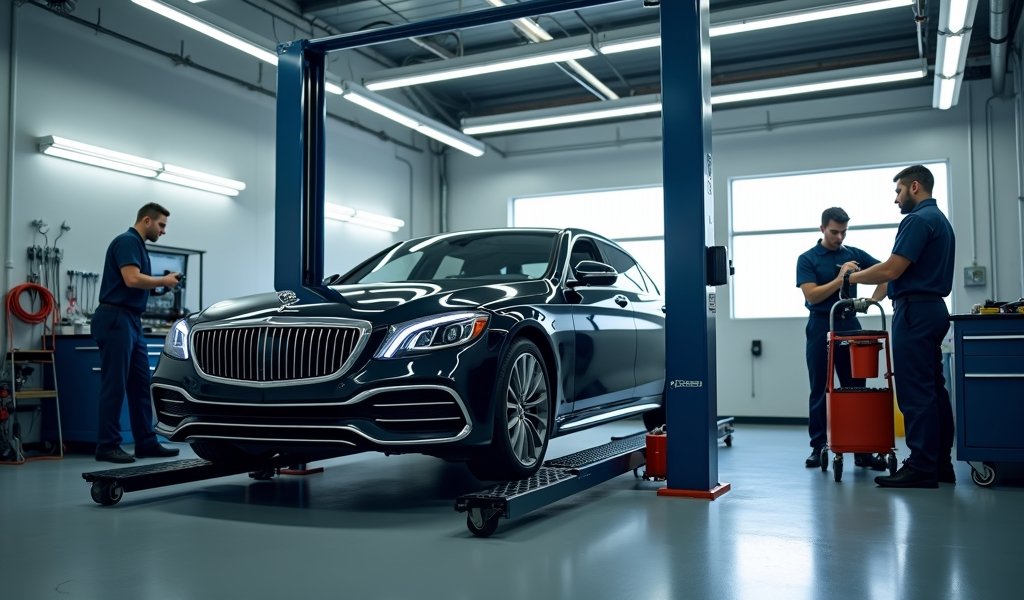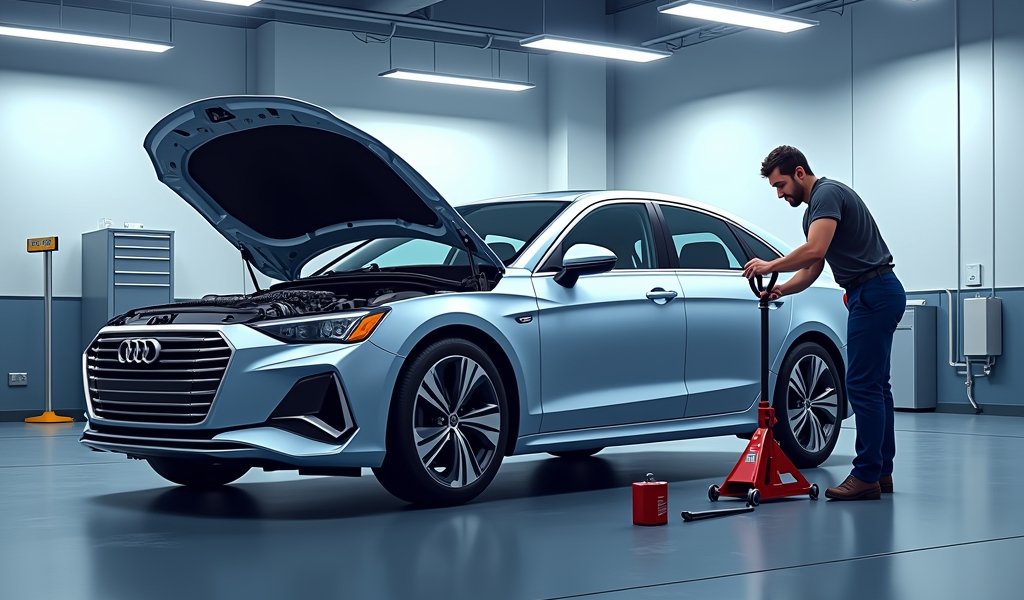Overview
This article explains the differences between major and minor car services, with minor services focusing on essential maintenance like oil changes every 5,000-7,500 miles while major services include more comprehensive component replacements at 30,000-60,000 mile intervals. It provides cost-saving tips, maintenance planning strategies, DIY versus professional service guidance, and warning signs that indicate when your vehicle needs immediate attention.
Table of Contents
- Understanding Car Service: Major vs Minor
- Key Differences Between Major and Minor Services
- 5 Essential Cost-Saving Tips for Car Servicing
- DIY vs Professional Servicing: What’s Best?
- Warning Signs Your Car Needs a Major Service
- Optimal Service Intervals for Different Vehicle Types
- How to Plan for Future Maintenance Costs
- Conclusion
- Frequently Asked Questions
Understanding Car Service: Major vs Minor
When it comes to major vs minor car service, understanding the difference can save you both time and money. As a mechanic with over 15 years of experience, I’ve seen countless customers confused about which service their vehicle actually needs.
Think of your car like your body – sometimes you need a quick check-up (minor service), and other times you need a comprehensive examination (major service). Minor services typically involve essential maintenance tasks that keep your vehicle running smoothly in the short term, while major services dig deeper to address components that wear out over longer periods.
A minor service generally includes an oil and filter change, fluid top-ups, and a basic inspection of critical components. These routine check-ups are the backbone of proper vehicle maintenance and typically occur every 6 months or 5,000-7,500 miles, depending on your vehicle’s specifications.
Major services, on the other hand, are more comprehensive overhauls that include everything in a minor service plus additional checks and replacements of components that wear out over longer intervals. This might include spark plugs, timing belts, brake fluid, and more thorough inspections of the suspension, brakes, and other critical systems.
Key Differences Between Major and Minor Services
Let’s break down the specific differences between these two service types to help you understand exactly what you’re paying for.
Minor services focus primarily on:
- Oil and oil filter replacement
- Tire pressure check and adjustment
- Brake fluid level inspection
- Coolant level check
- Battery condition assessment
- Visual inspection of belts and hoses
- Light and wiper function tests
Major services include all of the above, plus:
- Air filter replacement
- Cabin filter replacement
- Spark plug inspection or replacement
- Complete brake system inspection
- Transmission fluid check or change
- Timing belt inspection (replacement if needed)
- Suspension and steering component inspection
- Comprehensive diagnostic check of all vehicle systems
Cost is another significant difference. Minor services typically range from $100-$200, depending on your vehicle make and model. Major services can cost anywhere from $300 to over $1,000, especially if significant parts need replacement. This substantial price difference is why knowing when each type is necessary becomes so important for your budget.
According to AAA’s automotive experts, regular maintenance can extend your vehicle’s life by thousands of miles and prevent costly repairs down the road. So while that major service might seem expensive now, it’s often much cheaper than dealing with a complete system failure later.

5 Essential Cost-Saving Tips for Car Servicing
Now that you understand the difference between service types, let’s talk about how to keep those maintenance costs under control without compromising your vehicle’s health.
1. Follow Your Manufacturer’s Service Schedule
Your vehicle’s manual isn’t just filling space in your glove box – it contains valuable information specific to your car. Manufacturers have thoroughly tested your vehicle and know exactly what maintenance it needs and when. Following this schedule prevents both under-servicing (which can lead to breakdowns) and over-servicing (which wastes your money).
Modern vehicles often come with service interval monitors that use actual driving conditions to determine when service is needed. These systems are remarkably accurate and can help extend intervals for drivers with gentle driving habits.
2. Combine Services When Possible
Smart scheduling can save labor costs. For example, if you know your car will need both an oil change and brake service soon, scheduling them together can reduce the total labor time since the car will already be on the lift.
Some shops offer service packages that bundle common maintenance tasks at a discount. Always ask if there are any current maintenance specials or if combining services would result in cost savings.
3. Shop Around and Compare Quotes
Don’t be afraid to get multiple quotes for major services. Prices can vary significantly between dealerships, independent shops, and specialty garages. Sometimes the dealer isn’t always the most expensive option, especially for complex work specific to your vehicle make.
When comparing quotes, ensure you’re looking at identical service lists. Some shops might offer a lower headline price but exclude essential components of a proper service. A comprehensive car service checklist can help you verify that quotes cover all necessary work.
4. Learn Basic DIY Maintenance
Some aspects of minor servicing are surprisingly easy to do yourself. Simple tasks like changing air filters, replacing wiper blades, or topping up fluids require minimal tools and expertise but can save you significant labor costs.
There’s an abundance of vehicle-specific tutorials online, from manufacturer guides to YouTube videos. Just remember that DIY isn’t appropriate for all maintenance tasks, especially those requiring specialized tools or dealing with safety-critical systems.
5. Don’t Skip Regular Inspections
This might seem counterintuitive as a cost-saving tip, but regular inspections can identify small issues before they become expensive problems. A minor service that catches a leaking hose is much cheaper than the major repair needed after that hose fails completely and causes collateral damage.
Many shops offer free visual inspections or basic check-ups. Taking advantage of these can give you early warning of developing issues without the cost of a full service. According to Consumer Reports, preventative maintenance is consistently less expensive than reactive repairs.
DIY vs Professional Servicing: What’s Best?
The question of whether to tackle servicing yourself or leave it to the professionals is one I’m asked almost daily in my shop. The answer isn’t as straightforward as some might think.
DIY servicing has clear advantages. You’ll save on labor costs, which typically make up 40-50% of service bills. You’ll also gain valuable knowledge about your vehicle and develop skills that might help you diagnose problems earlier. For many car enthusiasts, there’s also considerable satisfaction in maintaining their own vehicle.
However, professional servicing brings significant benefits too. Modern vehicles are increasingly complex, with integrated computer systems that require specialized diagnostic equipment. Professional mechanics also bring experience that helps them spot potential issues that might not be obvious to the untrained eye.
A balanced approach often works best for most car owners. Consider handling simple tasks from your minor service requirements: oil changes (if you have appropriate disposal options), air filter replacements, and fluid top-ups. These are relatively straightforward and carry minimal risk if done correctly.
Leave the more complex aspects of major services to professionals. Things like timing belt replacements, transmission servicing, and brake system overhauls require specialized tools and experience to perform correctly. Mistakes in these areas can lead to significant damage or safety issues.
Remember that professional servicing also provides documentation of maintenance history, which can be valuable when selling your vehicle. Many car maintenance tips focus on finding this balance between DIY and professional work to maximize savings while minimizing risk.
Warning Signs Your Car Needs a Major Service
Sometimes your car will tell you it needs attention well before you reach a scheduled service interval. Learning to recognize these signals can prevent minor issues from becoming major expenses.
Unusual noises are often your first warning. Grinding sounds when braking, knocking from under the hood, or whining during acceleration are all signals that something needs attention. Modern vehicles have fewer moving parts, so any new noise should be investigated promptly.
Dashboard warning lights should never be ignored. While a check engine light doesn’t always indicate a severe problem, it should prompt at least a diagnostic scan. Many auto parts stores offer free code readings, or you can purchase an inexpensive OBD-II scanner for your smartphone.
Performance changes like reduced power, poor fuel economy, or rough idling often indicate engine issues that should be addressed before they worsen. Keep a log of your typical fuel economy – a sudden drop can be an early warning of developing problems.
Fluid leaks are another clear warning sign. The color of the fluid can help identify the source: green/yellow (coolant), brown/black (engine oil), red (transmission fluid), or clear/brown (brake fluid). Any leak deserves prompt attention, but brake fluid leaks require immediate professional inspection.
Vibrations or handling changes might indicate suspension, steering, or alignment issues. These not only affect comfort but can impact safety and cause premature tire wear if left unaddressed.
Remember that addressing these warning signs early through appropriate servicing almost always costs less than waiting for a complete failure. According to research by Edmunds, addressing maintenance issues promptly can save up to 30% compared to emergency repairs.

Optimal Service Intervals for Different Vehicle Types
Service intervals aren’t one-size-fits-all. They vary significantly based on vehicle type, age, and how you drive. Let’s break down some general guidelines while remembering that your owner’s manual always has the final say.
Conventional gasoline-powered vehicles typically need minor services every 5,000-7,500 miles or 6 months. Major services usually occur every 30,000-60,000 miles or 2-3 years. However, these intervals have been extending as engineering improves – many newer vehicles can go 10,000 miles between oil changes with synthetic oil.
Diesel engines generally have longer intervals between oil changes (typically 7,500-10,000 miles) but may require more frequent fuel filter changes. Their major service components like timing belts often have longer lifespans as well.
Hybrid vehicles benefit from reduced engine wear due to their electric motors handling some of the work. This often translates to longer minor service intervals, though their complex systems make major services particularly important. Most hybrids need specialized attention to cooling systems that manage battery temperature.
Electric vehicles have dramatically different service needs. Without traditional engines, they eliminate many maintenance items like oil changes and spark plugs. However, they still require brake service (though less frequently due to regenerative braking), cooling system maintenance for battery management, and regular tire care.
Your driving conditions matter too. If you primarily drive in any of these conditions, you’ll likely need more frequent servicing:
- Extreme temperatures (very hot or cold climates)
- Stop-and-go traffic
- Short trips (less than 10 miles)
- Dusty or unpaved roads
- Towing or hauling heavy loads
Most manufacturers specify “severe service” intervals for these conditions, which typically call for more frequent maintenance. Don’t ignore these recommendations – they’re based on extensive testing and can significantly extend your vehicle’s lifespan.
How to Plan for Future Maintenance Costs
One of the smartest approaches to car maintenance is planning ahead. This prevents maintenance costs from becoming financial emergencies and helps you budget appropriately.
Start by creating a maintenance calendar based on your vehicle’s service schedule. Mark when upcoming services will be needed based on either mileage or time intervals. Many smartphone apps can help track this, or you can use a simple spreadsheet.
Research typical costs for these upcoming services. Knowing that your 60,000-mile service might cost $800 gives you time to save approximately $16 per month over 50 months. This makes a major service a manageable expense rather than a financial shock.
Consider setting up a dedicated “maintenance fund” where you deposit a small amount monthly. This approach smooths out the peaks and valleys of maintenance expenses and ensures you’re never forced to defer important services due to budget constraints.
For older vehicles, it’s wise to increase your monthly maintenance fund contributions. As cars age, they typically require more frequent repairs beyond regular service items. Having this buffer prevents being caught off-guard by unexpected issues.
Some repair shops offer prepaid maintenance plans that can provide savings if you plan to keep your vehicle for several years. These plans often lock in current prices and may include discounts compared to paying for each service individually. Just be sure to read the fine print about what’s included and any restrictions.
Lastly, keep all service records meticulously. This documentation not only helps you track what’s been done but can significantly increase your vehicle’s resale value by demonstrating proper care. Digital record-keeping apps make this easier than ever before.
Conclusion
Understanding the difference between major vs minor car service is more than just mechanical knowledge – it’s a practical skill that can save you thousands over your vehicle’s lifetime. By knowing what each service entails, recognizing when each is necessary, and implementing the cost-saving strategies we’ve discussed, you can maintain your vehicle properly without breaking the bank.
Remember that regular maintenance isn’t an optional expense – it’s an investment that pays dividends through improved reliability, enhanced safety, better fuel economy, and higher resale value. The small, consistent cost of proper servicing is invariably cheaper than the large, unexpected costs of major repairs that result from neglect.
Whether you choose to handle some maintenance yourself or rely completely on professional service, the most important factor is consistency. Even the most expensive, high-quality vehicles will fail prematurely without proper care, while more modest vehicles can often deliver hundreds of thousands of miles of reliable service when maintained correctly.
Your vehicle is likely one of your largest investments. Treating it with informed, proactive care is not just mechanically sound – it’s financially wise.
Frequently Asked Questions
What’s the main difference between major and minor car services?
Minor services focus on essential maintenance like oil changes and basic inspections, while major services include everything in a minor service plus replacement of worn components like spark plugs, filters, and timing belts.
How often should I get a minor car service?
Most vehicles require minor services every 5,000-7,500 miles or 6 months, whichever comes first. Your owner’s manual will specify the correct interval for your specific vehicle.
Can I skip a major service if my car seems to be running fine?
Skipping scheduled major services is not recommended, even if the vehicle shows no obvious problems. Major services address wear items before they fail, preventing more expensive damage and breakdowns.
Is it worth paying extra for dealership servicing versus an independent shop?
Dealerships offer specialized knowledge and access to manufacturer-specific tools and information, which can be valuable for complex systems. Independent shops often provide comparable service at lower rates, especially for routine maintenance.
What happens if I use regular oil instead of synthetic in a car that requires synthetic oil?
Using regular oil in an engine designed for synthetic can lead to increased wear, reduced efficiency, and potentially voided warranties. Always follow manufacturer specifications for oil type.

